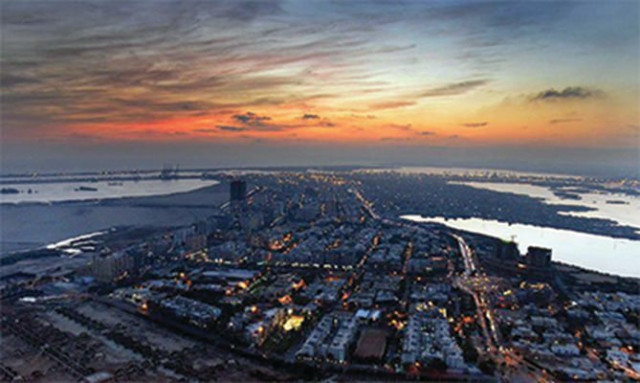Reviewing economy in 2021
High inflation, high unemployment, energy crunch hallmarks of difficult year

Year 2021 started on a relatively positive note for Pakistan’s economy. With the successful conclusion of the IMF’s fifth review, somewhat better control of Covid-19 and having achieved some financial stability, it was thought that the worst was over.
Except for cotton, all other crops such as wheat, rice, sugarcane, and maize had been exceptional. Industrial production, particularly large-scale manufacturing, was on an upward swing showing a growth rate of above 9% instead of the negative growth of 10% during the preceding year.
The current account deficit turned into a surplus for the first time. The GDP growth of 3.94%, announced in May 2021, was higher than expected and assumed a sign of V-shaped recovery.
Another encouraging indication was several statements from the decision-makers, emphasising a change of direction from geo-politics to geo-economics.
Despite these silver linings, the overall economy remained anaemic. Inflation continued to be at an intolerable high level averaging over 9% as compared to less than 5% for other regional countries.
The most distressing was the sharp rise in food prices, particularly those commodities, such as sugar and wheat, where the government imprint was high.
Foreign direct investment (FDI) continued to be very low, and ongoing work on CPEC projects also slowed down. Stalling of the sixth IMF review, which was due to be completed by June 2021, added to the economic difficulties and uncertainty.
Halfway through the year, the government felt that another change in the finance team could improve economic performance and get the pending IMF review completed. Before the annual budget, a new finance minister (the fourth since the PTI government came to power) was inducted. Other senior policymakers were also replaced.
An ambitious budget was passed in June 2021. Some of the key policy steps were to increase the public sector development fund by 40% (from Rs630 billion to Rs900 billion) and the imposition of no new taxes.
Instead of withdrawing tax exemptions as demanded by the IMF, the new finance team felt confident enough to exempt even more sectors from taxation. Also, no difficult decisions were taken to manage state-owned enterprises better to reduce their subsidies.
The IMF was not impressed with the lack of any new measures to enhance the collection of taxes and the level of autonomy given to the State Bank. It, therefore, continued delaying the disbursement of the next tranche under the $6 billion loan programme until prior action was taken on these issues.
Gauging the public mood, most of the cabinet opposes any mini-budget by imposing new taxes or further raising energy costs. Also, there is a strong lobby against any further independence of the State Bank.
Many claim that further autonomy would require a constitutional amendment that the government cannot deliver due to its thin majority in the legislature.
The delay in the successful completion of the sixth review has been a significant trigger for the fall in the value of Pakistani currency against the US dollar. Since May, it has fallen by almost 17%.
Another primary reason for the continued fall is the growing trade deficit, which rose to $21 billion in July-November 2021 from $9 billion over the corresponding months of previous year.
Adding to these difficulties is the way the energy crunch is being managed. There is no long-term planning with the frequent changes of ministers/ advisers at the Ministry of Energy.
When the global prices of LNG plunged in early 2020, the government had an offer to buy all its requirements for the next three years at $4 per mmbtu, but it let the offer lapse.
With the global prices rising sharply, in November 2021, it was forced to buy spot cargoes at over $30 per mmbtu. Even at this price, it could not make enough purchases to meet its winter requirements.
Therefore, it has resorted to gas rationing, resulting in the closure of CNG stations and reduced supplies to the domestic and industrial consumers.
In addition to the gas shortages, a sharp rise in prices of other petroleum products over the year has added to the public woes.
It seems that the government has no choice but to meet the IMF’s conditions to get the next instalment and start the delayed seventh review process.
According to press reports, the government plans to shortly impose Rs360 billion in indirect taxes. Such taxes would give another boost to the already high inflation and may result in the closure of many export industries.
All in all, 2021 has been a rather difficult year for the economy. High inflation, high unemployment and severe energy crunch have been the hallmarks of the year.
Unfortunately, none of the rosy predictions made at the beginning of the year has come to fruition. For 2022, we need to rethink our growth strategy and not rely on wishful thinking as we did for 2021.
The writer has served as Pakistan’s ambassador to WTO and FAO’s representative to the United Nations at Geneva
Published in The Express Tribune, December 27th, 2021.
Like Business on Facebook, follow @TribuneBiz on Twitter to stay informed and join in the conversation.



















COMMENTS
Comments are moderated and generally will be posted if they are on-topic and not abusive.
For more information, please see our Comments FAQ